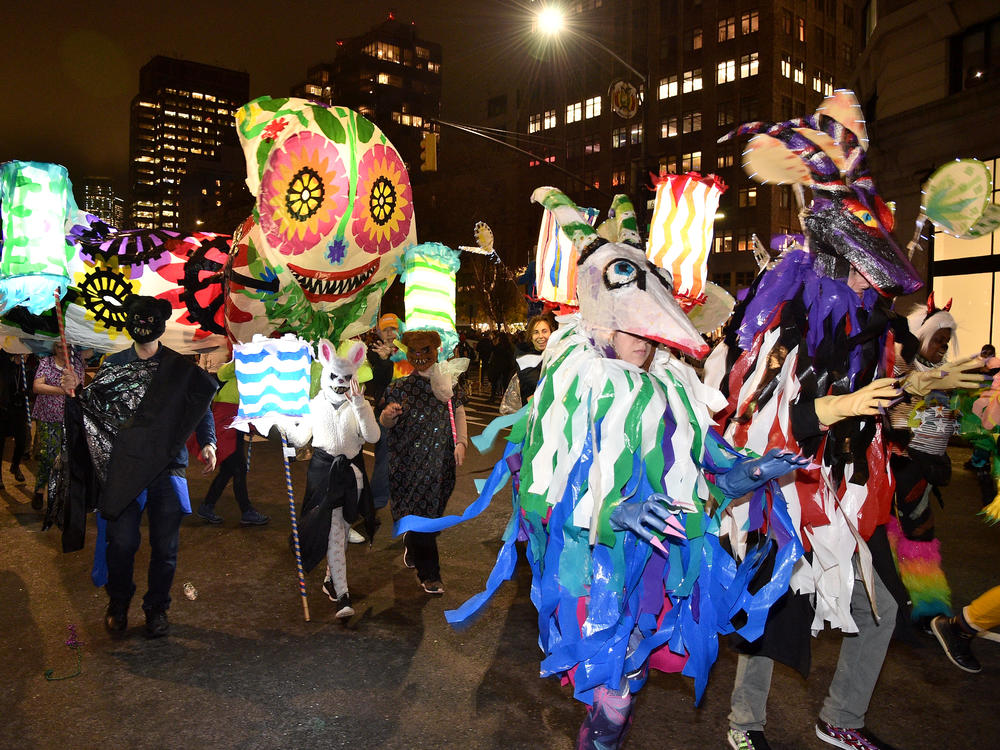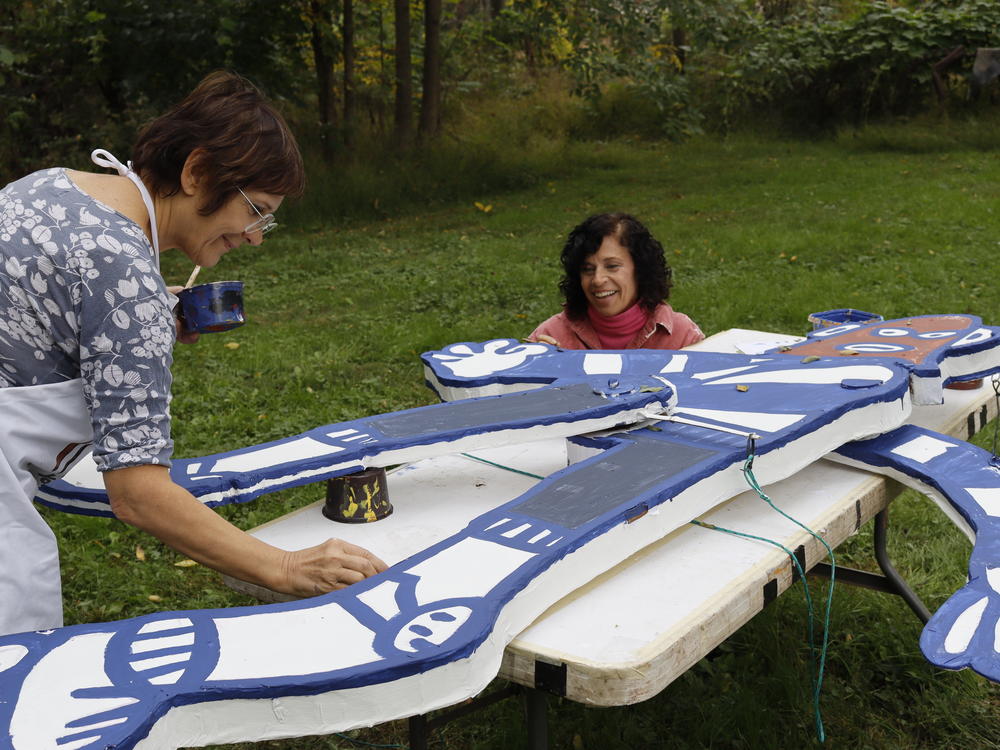Section Branding
Header Content
New York City's Village Halloween Parade comes back to life, saved by a serious fan
Primary Content
Many municipalities around the country have allowed large-scale Halloween gatherings to take place this year, after forbidding them in 2020 as a public health precaution prompted by the pandemic. Likely nowhere is this being greeted with as much enthusiasm as in New York City, where the Village Halloween Parade is one of the city's largest, most colorful cultural events of the year. Described as New York's version of Carnival, the parade provides a major economic boost to Lower Manhattan every year.
Before last year, the only other time the Village Halloween Parade was canceled was in 2012, when it had to be scrapped in the wake of Superstorm Sandy's devastation. Even the terrorist attacks on 9/11 didn't stop the costumed marchers from making the trip up Sixth Avenue just seven weeks later.
Covering that parade, I was reminded that you never know who will show up. I couldn't help but notice a Brooklynite marching with his pet goat, which was completely covered with MetroCards, the wallet-size plastic passes New Yorkers use for subway entry.
"He's MetroGoat," the Brooklynite told me, "and I'm MetroMan: able to leap over a turnstile in a single bound!"
Whether any goats will be hoofing it this year remains to be seen when the parade steps off in Soho on Sunday night, headed up to Chelsea, a few blocks north of Greenwich Village. But the 1959 Cadillac ambulance used in the movie Ghostbusters – a.k.a. The Ectomobile – will be tooling up the avenue, along with 10 taxi cabs dressed up to look like it. As in years past, there will be giant puppets, marching bands, floats and thousands of costumed marchers.
Jeanne Fleming, for 40 years the parade's artistic director, didn't learn that this year's event was on until mid-September. "I had no idea," Fleming says. "Like everyone else, we were waiting to hear what's going on with COVID, what's possible."
When city officials gave the go-ahead, Fleming scrambled to find sponsors, and instituted a crowdfunding campaign. Less than 200 people contributed a mere $10,000: a sum that disappointed Fleming, given the huge number of people who turn out to watch the parade. In late September she sent out an email warning that unless she could raise $150,000, the parade would be canceled.
And then, a 54-year-old financial advisor, who's been attending the parade since he was a teenager, made a $150,000 tax-deductible donation, effectively saving the parade.
"I was just trying to do something nice for the city I love," says Jason Feldman, a Manhattanite. "Hopefully, it's a great turnout and, hopefully, lots of spectators."
In early October, Feldman made the two-hour drive north to Rokeby, the 300-acre historic estate in Red Hook, N.Y., where Fleming lives and produces the parade. Set along rolling hills next to the Hudson River, Rokeby is also where some of the giant puppets for the parade are created. A Buddhist monk who lives on the estate is lending Feldman a monk's robe to wear as he marches alongside Fleming in front of the parade.
Fleming joke that the financial adviser could've dressed up as a knight in shining armor. But Feldman, a practitioner of Tai Chi, is opting for the Zen look, which includes sandals and a staff.
Every October volunteers, many from New York City, arrive on the weekends to help build giant puppets in what has come to be known as a puppet raising. Some of the work is done on the estate in an old dairy barn with a 30-foot ceiling. The parade's theme this year is Let's Play, dedicated to New York children who didn't have a proper Halloween last year. The giant puppets are based on drawings submitted by kids.
Patricia Valdez, who drove to Rokeby from her home in Harlem, was busy on a recent weekend, glue gun in hand, building part of a puppet out of cardboard. Valdez has been going to the puppet raising at Rokeby since 2016, and also marches in the parade, carrying one of the giant puppets.
"I like being part of something creative and I like that it's getting back into the community," she says. "When you're in the parade, you're seeing smiling faces, you're seeing awe. And how can you not feel good, knowing that you had something to do with that?"
The parade's COVID precautions this year are twofold. Marchers have been asked to wear medical masks while they're waiting in the staging area, but can take them off once they start on the mile-long walk uptown. Spectators along what is usually a packed Sixth Avenue are urged to wear masks, since social distancing is basically impossible. Many spectators wear costumes, often including a non-medical mask. In years past, more than two million parade watchers have jammed the sidewalk along the parade route.
"One of my favorite puppeteers is not coming, because she doesn't feel safe," Fleming notes. "Other people are not concerned at all." Attitudes, she notes, span "the entire gamut of everything the nation is feeling."
Fleming said she decided to select comedian Randy Rainbow as this year's grand marshal because his YouTube song parodies kept the nation laughing throughout the pandemic. Fleming admits the satirist scored major points when he released "Mr. Biden," a video parody of "Mr. Sandman" including lines like:
Mr. Biden, bring my vaccine
I want to trick or treat when we hit Halloween.
Rainbow, adorned in a specially made rainbow coat and his trademark pink glasses, will ride along with six dancers on a float designed by Richard Prowse, a retired Broadway set designer.
Feldman calls the parade "the best medicine for our city."
"People get to be themselves, maybe the most extreme versions of themselves, wherever their imagination takes them version of themselves," he says. "They don't judge, they don't expect to be judged. And that's indicative of what makes our city a wonderful place."
Adds Fleming, "It's the night that people get to come out and tell their stories, whatever their story is. That's the role that it plays. Can you imagine two years of shutting ourselves in, without having this night of celebration?"
That would be pretty scary, indeed.
Copyright 2021 NPR. To see more, visit https://www.npr.org.


